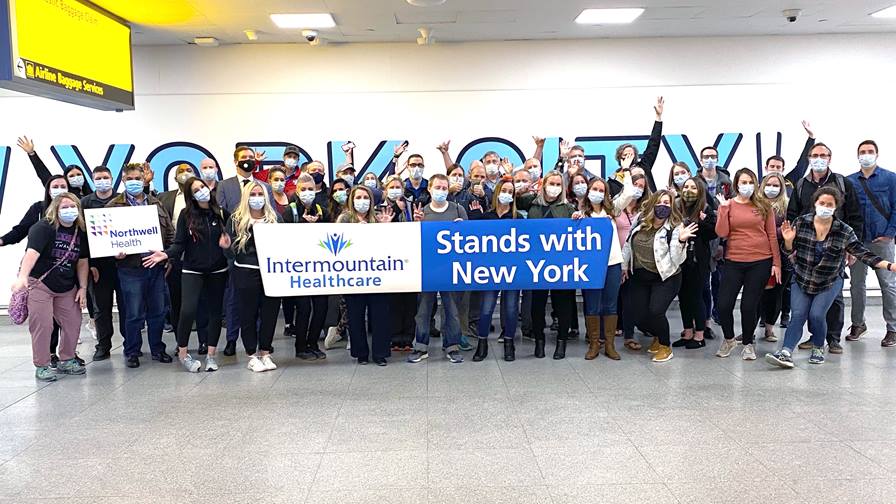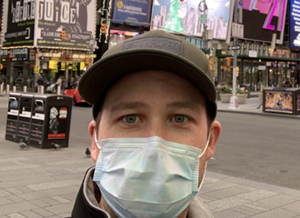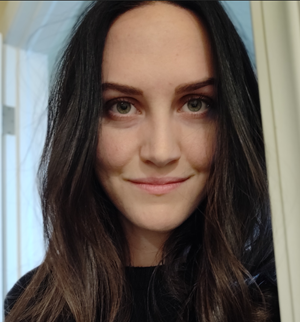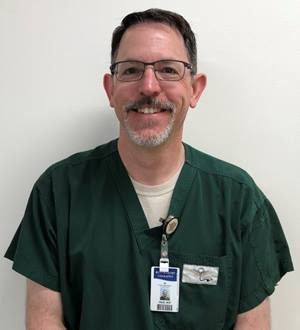
“They’re often the first to be called by nurses when a patient is having trouble breathing,” pediatric surgeon Chethan Sathya, MD, wrote in a recent Washington Post article. “They know more about oxygen, breathing support, and ventilators than most others in the hospital. They work complex machines, suction secretions from the airway, take patients off the ventilators, and in many hospitals, they even position the breathing tube in the first place or teach trainees how to do so.”
Three Intermountain respiratory therapists were among the 100 caregivers who spent two weeks in New York to assist with the COVID-19 pandemic surge there recently. Kate Wright, Fred Ashton, and Jesse du Toit each worked multiple shifts in New York hospitals during some of the state’s most challenging times. Here are their answers to some questions about their experience in New York.

Jesse du Toit, a respiratory therapist based at Intermountain Medical Center, in a deserted Time Square
What did you experience that was unexpected (e.g., equipment and supplies, staffing ratios)?
Jesse says, “The hospital where I worked typically had about 30 ventilators running prior to COVID-19, but they had 133 running during my first shift…We were having rapid responses every 15 to 20 minutes, which was rather challenging. There were several shifts during which I was assigned 22 intubated patients with me being the sole RT providing for them working with the doctors and nurses on staff.” Fredric says, “An incredible amount of resources had been dedicated to creating patient care areas out of essentially ‘blank’ spaces such as break areas or conference rooms.”

Kate Wright is a respiratory therapist based at Alta View Hospital
What did you do to practice “self-care” during your stay in New York?
Kate says, “The burden of lives lost every day was overwhelming, especially while being away from home and my regular support system. All I could do was try to get plenty of sleep, remember to eat, and keep going to work the next day.” Jesse says his team’s plan was to have ‘battle buddies,’ which meant each person had someone to look out for and they would do the same. He says, “I think everyone underestimated the cumulative effect social-distancing and all masked and unfamiliar faces would have on them. A few days in, I managed to assemble a small group for the purposes of keeping tabs on each other and socializing (to the limited extent possible).”

Fed Ashton is a respiratory therapist based at Riverton Hospital
Were there any special heroes you encountered during your journey?
"The ‘heroes’ for me were the healthcare workers who kept coming into work despite having a loved one sick with COVID-19,” Jesse says. “There were multiple people I met with loved ones in the ICU and they kept on picking up extra shifts so they could help care for someone else’s loved one. It was very humbling to work with true heroes like that.” Fred says, “There were several nurses in Heart CCU, which was one of five cardiac ICUs, that treated me with the trust, respect, and comradery of a valued, long-time coworker, espeically two nurses I worked with a lot. They brought me into their unit family by making sure I was part of the Starbucks run or food order, helping me with needed items and patient issues, or just talking. If this pandemic has affected their patient care or dampened their spirits, I couldn’t tell…they’re outstanding nurses and they’re heroes for those they care for. And whether they realized it or not, they’re heroes for me. I was only there for two weeks and got to come back to Utah. They’ve been there the whole time with no end in sight.”
What did you feel were the unique skills and expertise that RTs brought to your work during the COVID surge in NY?
Kate says, “The tenacious tan secretions and mucous plugs associated with ventilated COVID-19 patients are enough to end a patient’s life if not managed appropriately. Experience with secretion management was one huge asset respiratory was able to bring. We immediately began vigorously suctioning every patient and preaching the importance of it to nursing staff and providers.”
Would you encourage other RTs to participate in similar redeployments the future? If so, why?
All three respiratory therapists say they’d volunteer again to march into the frontlines to provide expertise and compassionate care, and they’d recommend others to do the same because the need is great. “I know from experience that just one competent RT on the team can mean the difference between recovery and death for COVID-19 patients,” Kate says. Fred adds, “I don’t think I’d actually encourage anyone to go because the physical and emotional stakes are high. You really can’t know what you’re getting into until you’re there and it could change quickly. You want someone to be there because they wanted to. It would need to be someone with enough experience to be able to walk into a unit and assume a heavy load of critically ill patients on equipment they may not have used before.”
What did you wish you’d taken with you or done differently during your work in NY?
Jesse says, “One thing I wish I could have brought with me and used for patients is the set of protocols Intermountain has for respiratory care. The protocols we have in place at Intermountain give us autonomy to practice within reason."
“As respiratory therapists, we embrace high quality, safe patient care,” says Kim Bennion, Intermountain’s administrative director of respiratory care services. “Our hats off to these healthcare heroes who left the comforts of home to enter directly into the pandemic ‘war zone.’ Respiratory therapists make a difference every day. Working as valuable members of the healthcare team, we recognize that when you can’t breathe, nothing else really matters.”

